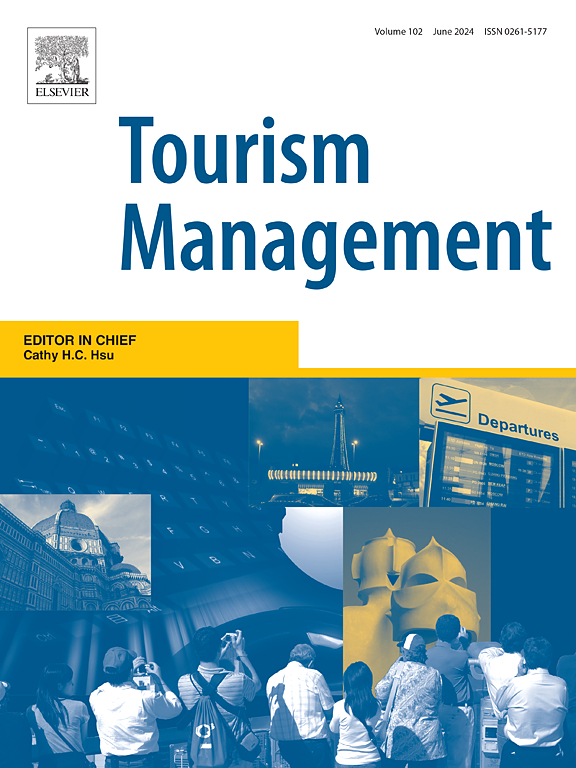探索目的地营销中数字影响者的吸引力:双路径意义转移的诱惑
IF 10.9
1区 管理学
Q1 ENVIRONMENTAL STUDIES
引用次数: 0
摘要
数字人是目的地营销的新参与者;然而,人们对它们的营销效果知之甚少。本研究探讨了数字影响者的吸引力及其在目的地营销中的作用。在意义迁移理论和双重过程理论的基础上,我们建立了一个整合情感和认知途径的双路径意义迁移模型。采用混合方法设计,包括定性访谈和四项定量研究,以确定和验证吸引力维度并测试其效果。我们确定了数字影响者吸引力的六个维度(表现力、身体吸引力、拟人化、互动性、时尚性和文化吸引力),它们通过两种途径的顺序中介影响营销效果。此外,影响者-目的者一致性对意义迁移的认知路径有调节作用。本研究通过整合不同的路径来阐明数字人类影响者认可的机制,从而为文献做出贡献。我们的研究结果也为在旅游营销中更好地利用数字人类影响者提供了深刻的管理启示。本文章由计算机程序翻译,如有差异,请以英文原文为准。
Exploringthe attractiveness of digital human influencers in destination marketing: The Allure of two-path meaning transfer
Digital humans are new players in destination marketing; however, little is known about their marketing effectiveness. This research investigates digital human influencers' attractiveness and their roles in destination marketing. Drawing upon meaning transfer theory and dual process theory, we developed a two-path meaning transfer model integrating both affective and cognitive pathways. A mixed-methods design, including qualitative interviews and four quantitative studies, was applied to identify and validate the attractiveness dimensions and test their effects. We identified six dimensions of digital human influencer attractiveness (expressiveness, physical attractiveness, anthropomorphism, interactivity, trendiness, and cultural attractiveness), which shape marketing effectiveness through the two pathways’ sequential mediation. Additionally, the cognitive route of meaning transfer was moderated by the influencer–destination congruence. This research contributes to the literature by integrating distinct paths to elucidate the mechanisms of digital human influencer endorsement. Our findings also provide insightful managerial implications for better utilizing digital human influencers in tourism marketing.
求助全文
通过发布文献求助,成功后即可免费获取论文全文。
去求助
来源期刊

Tourism Management
Multiple-
CiteScore
24.10
自引率
7.90%
发文量
190
审稿时长
45 days
期刊介绍:
Tourism Management, the preeminent scholarly journal, concentrates on the comprehensive management aspects, encompassing planning and policy, within the realm of travel and tourism. Adopting an interdisciplinary perspective, the journal delves into international, national, and regional tourism, addressing various management challenges. Its content mirrors this integrative approach, featuring primary research articles, progress in tourism research, case studies, research notes, discussions on current issues, and book reviews. Emphasizing scholarly rigor, all published papers are expected to contribute to theoretical and/or methodological advancements while offering specific insights relevant to tourism management and policy.
 求助内容:
求助内容: 应助结果提醒方式:
应助结果提醒方式:


